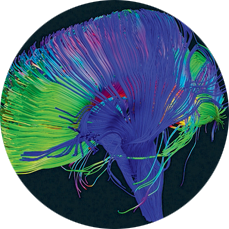 The mission of the Maternal-Fetal Medicine and Translational Imaging Affinity Group is to understand the biology of normal pregnancy and its complications, as well as normal/abnormal neurodevelopment during childhood by the application of innovative, state-of-the art cellular, molecular, and imaging methods to improve the diagnosis, treatment, and prevention of conditions responsible for maternal, perinatal, and infant morbidity and mortality.
The mission of the Maternal-Fetal Medicine and Translational Imaging Affinity Group is to understand the biology of normal pregnancy and its complications, as well as normal/abnormal neurodevelopment during childhood by the application of innovative, state-of-the art cellular, molecular, and imaging methods to improve the diagnosis, treatment, and prevention of conditions responsible for maternal, perinatal, and infant morbidity and mortality.
Quantitative Imaging and Tissue Sciences (Basser) invents, develops, and translates novel in vivo microstructural and functional MRI methods designed to measure salient properties of the developing brain and assess and characterize their changes in diseases and disorders. These novel quantitative imaging biomarkers are also used in neuroscience application to characterize brain network connectivity and dynamics, as well as brain tissue architectural organization.
Translational Biophotonics (Gandjbakhche) uses multi-disciplinary approaches to devise functional imaging technologies and methodologies for translating benchtop studies to the bedside. For example, near infrared spectroscopy and electroencephalogram are used to assess biomarkers for a wide range of brain development abnormalities and injuries, specifically, but not limited to, cognitive and behavioral disorders in children and traumatic brain injury. The laboratory explores endogenous (scattering and absorption) and exogenous (using fluorescence probes) optical contrast mechanisms for characterizing abnormal development and function in tissues such as the placenta. They also are involved in clinical and preclinical studies aimed at characterizing growth and development of various abnormal tissues and monitoring the efficacy of their treatment using photonics methods, such as fluorescence life time and multi spectral imaging.
Perinatology Research (Romero) Investigates normal pregnancy and its most frequent complications such as preterm labor, preterm prelabor rupture of membranes, preeclampsia, fetal growth disorders, and fetal death--conditions which account for the excessive rate of infant mortality in the United States. The Laboratory conducts clinical and translational research and develops diagnostic, predictive, therapeutic, and preventative methods to reduce adverse pregnancy outcomes.
Biomedical Optics (Tromberg) Develops models, methods, and devices for understanding and controlling light interactions with biological tissues. These methods are used to perform real-time quantitative measurements of clinically-relevant information, including: tissue blood flow, oxygen extraction, metabolic rate of oxygen consumption, and body/tissue composition (lean mass, hydration, and fat mass). Advanced capabilities include continuous dynamic monitoring of intrinsic physiological signals that can be used in feedback optimization for guiding therapies and clinical decision making. Our technology development effort includes portable, bedside, non-contact and wearable sensor platforms, as well as the design and integration of probes into instruments for minimally invasive surgical feedback and guidance.
Labs within this group include (alphabetically):

 BACK TO TOP
BACK TO TOP